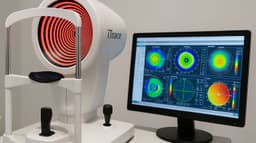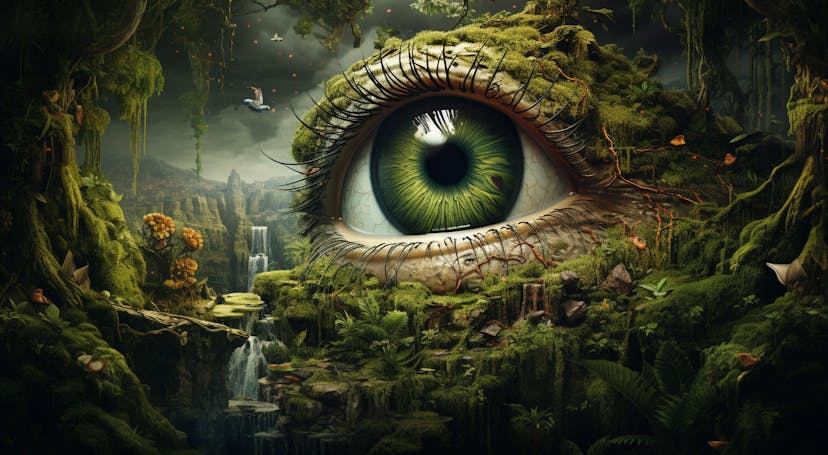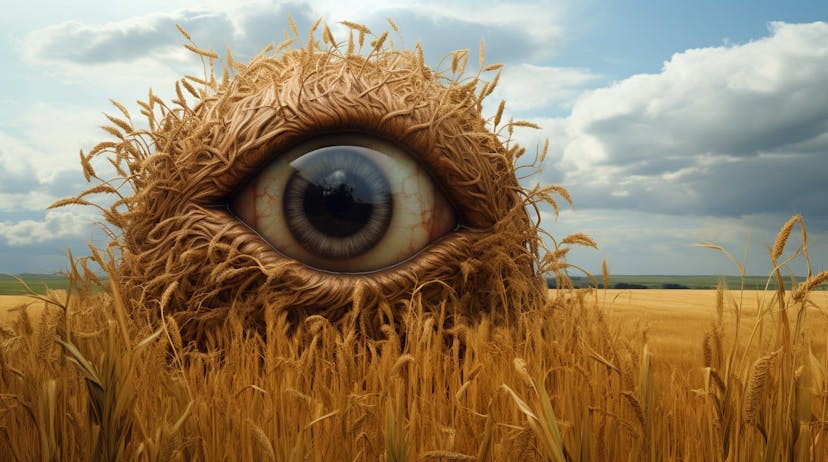
The Negative Effects Of Decorative Contact Lenses
Decorative contact lenses, often chosen for their ability to enhance costumes or create dramatic visual effects, have gained popularity in recent years. However, it's important to recognise that improper use or acquisition of these lenses can lead to a range of adverse effects on eye health. From corneal abrasions to potentially serious infections, the risks associated with these non-prescription lenses are substantial. In this discussion, we will delve into the negative effects of wearing decorative contact lenses, highlighting the importance of proper fitting, hygiene, and the guidance of a licensed eye care professional. Understanding these risks is crucial for ensuring both the enjoyment of cosmetic lenses and the preservation of ocular health.
Negative Effects On The Eyes
Wearing decorative or costume contact lenses, also known as cosmetic or plano lenses, without proper care and a prescription from an eye care professional can lead to several negative effects:
- Corneal Abrasions and Scratches: Poorly fitted or improperly handled lenses can scratch the surface of the eye (cornea), causing pain, redness, and discomfort.
- Corneal Infections: Bacteria, viruses, or fungi can adhere to the surface of the lens and cause infections, which may lead to more severe issues if not treated promptly.
- Reduced Oxygen Supply: Some decorative lenses may not allow enough oxygen to reach the cornea. This can result in discomfort, redness, and potentially more severe complications over time.
- Allergic Reactions: The materials used in some decorative lenses may not be biocompatible to your eyes, leading to allergic reactions, including redness, itching, and swelling.
- Dryness and Discomfort: Poorly fitted lenses or lenses made from non-breathable materials can lead to dry eyes, irritation, and discomfort.
- Decreased Vision Quality: Non-prescription lenses may not be properly calibrated for your eyes, which can lead to distorted or blurred vision.
- Loss of Stereoscopic Vision: Improperly fitted or non-prescription lenses can disrupt the alignment of the eyes, leading to a loss of depth perception.
- Corneal Ulcers and Scarring: Severe infections, if not treated promptly, can lead to corneal ulcers and scarring, potentially causing permanent vision impairment.
- Difficulty Removing the Lenses: If the lenses are not fitted properly or not handled correctly, they may be difficult to remove, causing further irritation.
- Overuse of Over-the-counter drops: If discomfort or dryness occurs, individuals may overuse over-the-counter eye drops, which can have their own set of potential side effects.
- Improper Cleaning and Hygiene: Some people may not clean and store their decorative lenses properly, which can lead to a buildup of bacteria or debris on the lens.
- Illegal Sales and Poor Quality Control: Non-prescription decorative lenses purchased from unauthorized sources may not meet safety and quality standards, increasing the risk of complications.
It is essential to prioritise your eye health and safety. If you're interested in wearing contact lenses for cosmetic purposes, consult an eye care professional who can provide proper fitting, a valid prescription, and guidance on safe and hygienic lens usage.
On What Occasions Do People Wear Decorative Contact Lenses?
People wear decorative contact lenses on various occasions for artistic, cosmetic, and entertainment purposes. Here are some common occasions:
Halloween
Halloween is fast approaching, everyone is getting their costumes ready, the hair, the makeup and the accessories - including contacts. Coloured contacts are very popular around this time of year as they give people a chance to change the colour of their eyes and become a completely different person and enhance their costumes. This is one of the most popular times for wearing decorative contact lenses. People often use them to enhance their costumes, creating spooky or fantastical looks.
Cosplay Events
Cosplayers, who dress up as characters from movies, TV shows, video games, and comics, frequently use decorative contact lenses to accurately replicate the eye colours and designs of their chosen characters.
Theatrical Performances
Actors in stage productions may wear decorative contact lenses to portray characters more convincingly, especially for roles involving fantasy or supernatural elements.
Film and Television Productions
In the entertainment industry, actors often wear decorative lenses to achieve specific visual effects for their characters.
Photography Shoots
Models, performers, and individuals in artistic or avant-garde photoshoots may wear decorative contact lenses to create striking and unique visuals.
Special Events and Parties
Some people choose to wear decorative lenses for themed parties or events where they want to make a strong visual statement.
Conventions and Expos
Attendees at conventions related to comics, anime, sci-fi, and fantasy often wear decorative lenses to authentically represent their favourite characters.
Music Videos and Music Performances
Musicians and performers sometimes wear decorative lenses to enhance their stage presence and create memorable visuals for their audience.
Fashion Shows
Models in fashion shows may wear decorative contact lenses to complement and enhance the overall look and style of a designer's collection.
Personal Expression
Some individuals wear decorative lenses as a form of self-expression and to showcase their unique style, even outside of specific events or occasions.
It's crucial to note that regardless of the occasion, individuals should always prioritise eye health and safety when wearing decorative contact lenses. This includes obtaining them from a licensed eye care professional, following proper hygiene and care guidelines, and ensuring a proper fit for the lenses.
Do You Need A Perscription?
Yes, in many countries, including the United Kingdom, you need a prescription from a licensed eye care professional (such as an optometrist or ophthalmologist) to legally purchase decorative contact lenses, even if they don't have corrective power. This is because all contact lenses, including decorative ones, are considered medical devices and require proper fitting and supervision to ensure they are safe for your eyes.
As for danger signs to look out for when wearing decorative contact lenses, here are some important indicators that something may be wrong:
- Pain or Discomfort: If you experience pain, discomfort, or a feeling of something being in your eye while wearing the lenses, it's a sign that they may not be fitting properly or there could be an issue with the lens itself.
- Blurred or Distorted Vision: If your vision becomes blurred, or distorted, or you experience sudden changes in vision quality while wearing the lenses, it's a clear sign that something is amiss.
- Redness or Irritation: Persistent redness, itchiness, or irritation of the eyes can indicate that the lenses may be causing irritation or may not be clean.
- Excessive Tearing or Dryness: Unusual tearing or excessive dryness of the eyes could be a sign that the lenses are not fitting properly or that they are affecting the eye's tear film.
- Sensitivity to Light: Increased sensitivity to light (photophobia) can be a symptom of eye irritation or inflammation, which may be caused by improperly fitted lenses.
- Foreign Body Sensation: If you feel like there's something in your eye that you can't remove, it's a sign that the lens may be dislodged or irritating the eye.
- Difficulty Removing the Lens: If you have difficulty removing the lens, it may be a sign that it's not fitting properly or it's stuck to the eye.
- Visible Damage to the Lens: If you notice any tears, scratches, or abnormalities on the lens itself, do not wear it, as it can potentially harm your eyes.
- Vision Discrepancies between Eyes: If there's a noticeable difference in vision or comfort between your two eyes when wearing the lenses, it's a sign that they may not be fitting symmetrically.
If you experience any of these symptoms or signs while wearing decorative contact lenses, it's crucial to remove them immediately and seek advice from an eye care professional. Ignoring these warning signs can lead to serious eye complications. Remember, safety and proper eye care should always be a top priority when using any type of contact lens.

A Customer Example
Take Laura Butler for example. Laura spent a simple £30 on her contacts, bargain right? Wrong.
Laura ended up spending £2000 on medical bills because of the contacts. She had purchased them from a beach shop without a solution or instructions and still went ahead and popped them in.
Hours later she was in excruciating pain and was unable to remove them from her eyes for 20 minutes as they had become stuck. When she went to the doctor, she was told that the damage was similar to sandpaper being rubbed on her cornea and that she could lose her eyesight or maybe even her eye.
She had to be treated for 7 weeks and had a drooping eyelid for several of those weeks. Up until now, her vision has not recovered to the state it had been previously.
Low-quality contacts can sometimes contact heavy toxins such as mercury and lead which can seep into the wearer's eye and then into the nervous system, which could end up being fatal.
When inserting contact lenses, the cornea is most vulnerable to damage. The cornea is a sensitive tissue in the eye that can be easily damaged by inexperienced contact wearers.
Damage such as a tear can lead to a bacterial infection such as Acanthamoeba Keratitis in the eye.
Here's some tips if you are going to wear coloured contacts:
- Have an eye exam. This will allow an ophthalmologist to measure your eye and give you recommendations on how to look after it during and after contact wear
- Avoid buying contacts without prescriptions. Make sure that when you purchase a pair, it has a brand name, measurements, an expiry date and instructions
- Follow the lens care guide step by step including instructions on how to wear, disinfect and clean
- Purchase contacts for yourself and yourself only. Sharing contacts increases the risk of bacteria which will affect you and the person you shared the contacts with
- Avoid wearing them for long hours
- Book a follow-up appointment. Once all the fun and games have ended and it's time to put Dracula's cape away, be sure to book an appointment to see your ophthalmologist to make sure there is no damage.
By making sure you get your contacts fitted properly, you're guaranteed to have a night of trick-or-treat fun, not a trip to your local A&E.
Find out more by Speaking to our team









